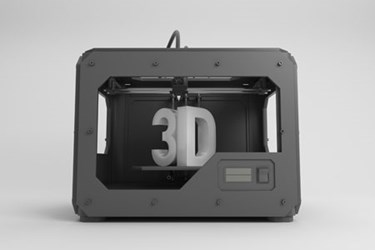3D Printing's Enormous Potential

By Christine Kern, contributing writer

From the military to space and beyond, 3D printing is on the rise.
Market research firm Canalys predicts the global market for 3D printers and services will grow from $2.5 billion in 2013 to $16.2 billion in 2018, a compound annual growth rate of 45.7 percent. And SearchCIO columnist Harvey Koeppel writes we have only seen the tip of the possibilities’ iceberg, as Business Solutions Magazine reported.
“This is a market with enormous growth potential now that the main barriers to up-take are being addressed,” said Canalys Senior Analyst, Tim Shepherd in the forecast. “Advances in technology are yielding faster print times and enabling objects to be printed in greater combinations of materials, colors, and finishes. Crucially, prices are also falling, making the technology an increasingly feasible option for a broad variety of enterprise and consumer uses, restricted only by computer aided design competencies and printer availability — both of which are set to improve significantly.”
From the military to 3D printing in space and beyond, the technology offers a host of possibilities beyond traditional manufacturing and industry.
And 3D printing is back in the headlines following Donald Trump’s first foreign policy speech in which he promised to use the technology to help rebuild U.S. military strength. So how can 3D printing impact war and foreign policy? According to industry expert John Hornick, so-called “additive manufacturing” will turn the defense industry — and possibly the global economy — on its head.
“The U.S. military is actively examining what 3D printers can do,” Hornick wrote in an email. “The army created a mobile fab lab for printing things as needed, where needed, when needed. Projects include 3D printing uniforms, weapons, blast-proof vehicle parts, and drones. All of these projects mean jobs, either for defense-contractor employees or military personnel.”
3D printing has already revolutionized design, manufacturing, and business here on Earth. Now its reach is extending through the galaxy and is beginning to transform the way tools and technology are made in outer space. NASA’s new Think Outside the Box challenge is encouraging students to use 3D printing to design products with space in mind. According to Hornick, 3D printing in space will save money, time, and even lives.
The first 3D printer was used in space in 2014, printing approximately 20 objects that were returned to Earth and studied, according to NASA. Made in Space, the Northern California company that supplied the space station’s 3D printer, called it “a transformative moment,” and Aaron Kemmer, chief executive officer, stated, “When the first human fashioned a tool from a rock, it couldn’t have been conceived that one day we’d be replicating the same fundamental idea in space.”
“Additive manufacturing is helping us explore a new frontier beyond our world,” Hornick, author of 3D Printing Will Rock the World. “Eventually, it can make space flights more affordable, and provide astronauts with more security during long trips.”
